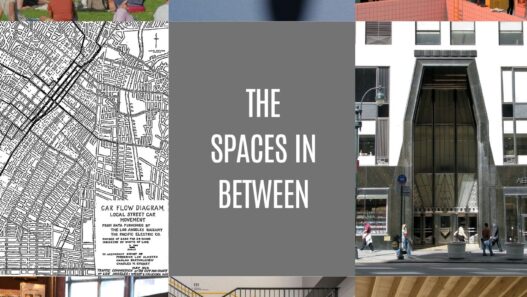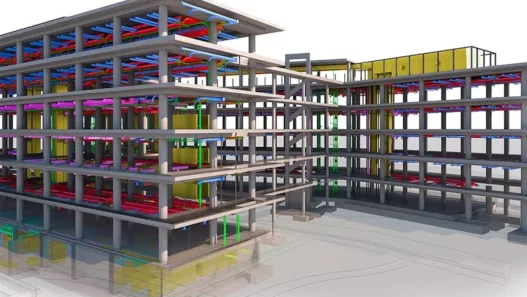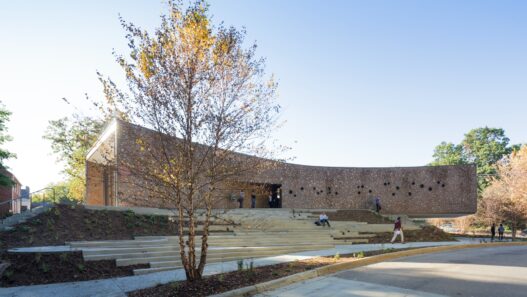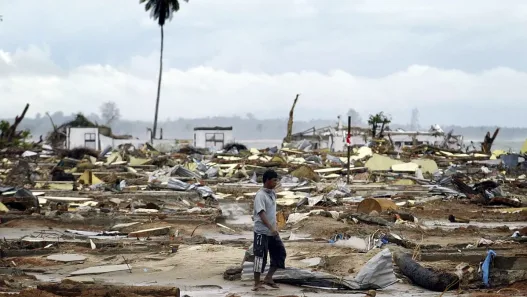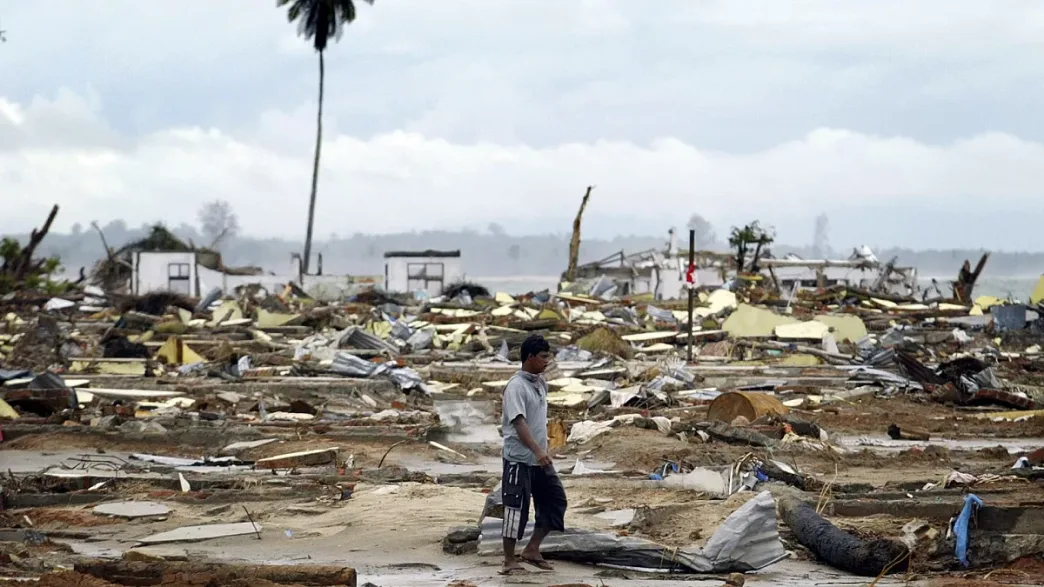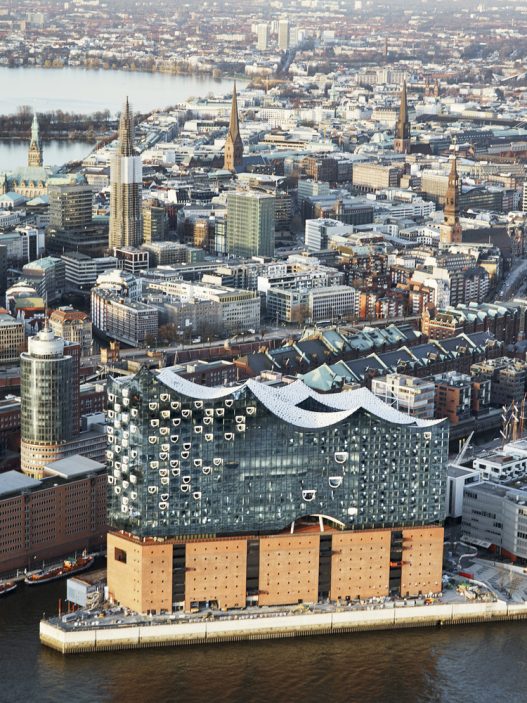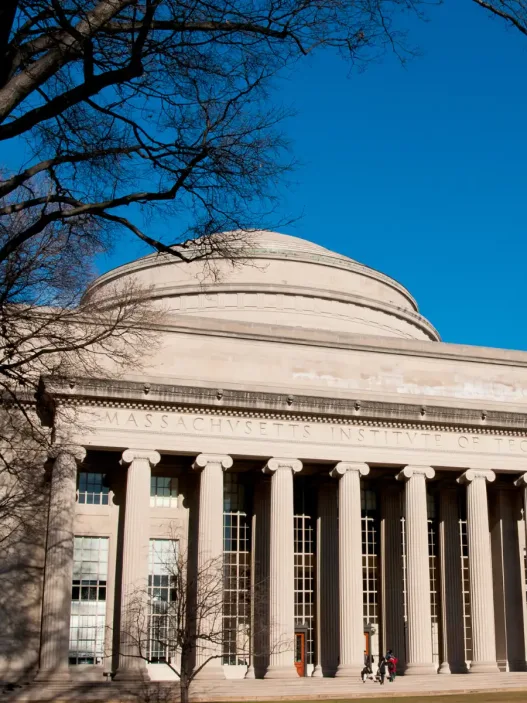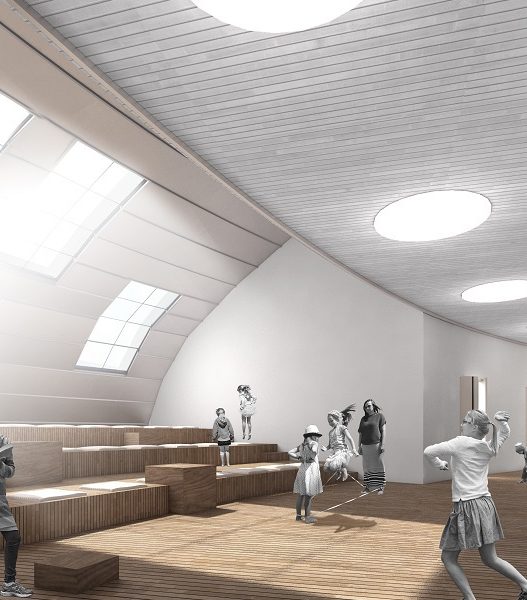The Indian Ocean tsunami stands as a poignant reminder of the raw power of nature and the vulnerability of coastal communities. The disaster, which occurred off the coast of Sumatra, Indonesia, on December 26, 2004, was triggered by a massive undersea earthquake. The tsunami unleashed waves several metres high, devastating coastlines across many countries including Indonesia, Thailand, India and Sri Lanka. The aftermath of this disaster not only resulted in huge loss of life and property, but also sparked a global debate about the need for improved architectural practices and disaster preparedness.
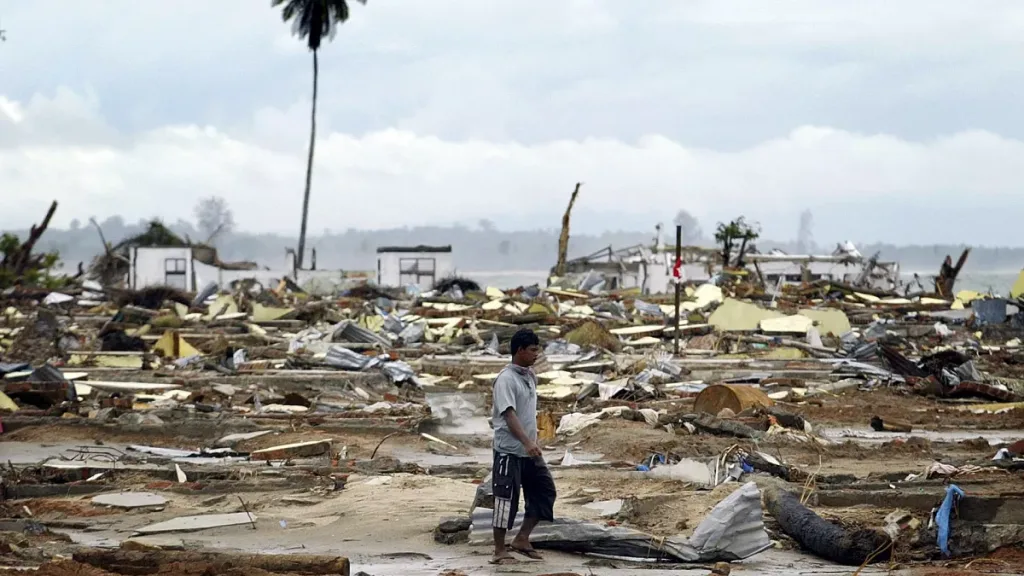
Background of the Tsunami
The tsunami was triggered by a seismic event known as a megathrust earthquake, where one tectonic plate pushes against another. The earthquake reached a magnitude of 9.3, making it one of the strongest earthquakes ever recorded. The sudden shifting of the ocean floor created powerful waves that traveled across the Indian Ocean. Societies that had never experienced such an event before were completely unprepared, resulting in the deaths of more than 230,000 people in fourteen countries. The magnitude of the disaster exposed significant gaps in existing infrastructure and emergency response systems.
Impact on Coastal Communities
The impact of the tsunami on coastal communities has been devastating. Entire towns were destroyed, leaving millions homeless. In places like Banda Aceh, Indonesia, the destruction was almost complete, with homes, schools, hospitals and roads inundated. While survivors struggled with grief and trauma, the psychological toll was just as deep. Economically, the disaster disrupted livelihoods, particularly fishing and tourism, which are vital to these coastal economies. The urgent need for reconstruction has led to discussions about how to create safer, more resilient environments that can withstand future natural disasters.
Emergency Response and Recovery Efforts
In the immediate aftermath of the tsunami, international aid poured in from around the world. Governments, NGOs, and local communities worked together to provide emergency assistance, including food, shelter, and medical aid. As the initial shock wore off, efforts shifted to longer-term recovery and reconstruction. This phase highlighted the need for a coordinated reconstruction approach that prioritized not just speed but also safety and sustainability. The focus was on creating infrastructure that could withstand not just tsunamis but other natural disasters, and that would foster a sense of security among the affected population.
The Importance of Architectural Durability
Architectural resilience has become a focal point in discussions of reconstruction after the tsunami. In architecture, resilience refers to the ability of buildings and infrastructure to withstand, recover from, and adapt to adverse events. Post-tsunami, architects and urban planners recognized the critical need for designs that could withstand extreme weather conditions and seismic activity. This emphasis on resilience was not just about building stronger buildings; it also included consideration of broader contexts such as community planning, environmental sustainability, and the integration of disaster preparedness into everyday life.
Overview of Innovations in Architecture
A wave of architectural innovations emerged in response to the lessons learned from the tsunami. One notable development was the adoption of elevated structures designed to minimize flood risk. Many new buildings were built on piles to allow water to flow underneath them during a disaster. Additionally, architects began to incorporate tsunami walls and other barriers into coastal designs to provide an extra layer of protection.
Additionally, the use of local materials has become an important aspect of reconstruction efforts to promote sustainability and reduce costs. The integration of traditional architectural styles with modern engineering techniques has also gained traction, resulting in designs that respect cultural heritage while improving safety.
Innovative early warning systems that use technology to warn communities of impending tsunamis have been developed. Often paired with community education programs, these systems have significantly increased resilience by ensuring residents are informed and prepared.
The Indian Ocean Tsunami not only reshaped the lives of countless individuals, it also led to a significant evolution in architectural practice. This focus on resilience, sustainability, and community-centered design remains relevant today as societies around the world continue to overcome the challenges posed by natural disasters. Through these innovations, the legacy of the tsunami is a powerful catalyst for positive change in architecture and urban planning.
The Indian Ocean Tsunami was a catastrophic event that left a deep impact on countries bordering the Indian Ocean. The aftermath of the Tsunami saw significant changes to the architectural landscape due to the urgent need for reconstruction and innovation. This reconstruction was not just about bringing back what had been lost; it became an opportunity to rethink how societies could be designed to be more resilient, sustainable and culturally appropriate.
Key Architectural Challenges After the Tsunami
In the aftermath of the tsunami, architects and urban planners faced a multitude of challenges that shaped their approach to reconstruction, including assessing the extensive damage, meeting the urgent shelter needs of displaced communities, considering environmental impacts, complying with new safety regulations, and integrating local cultural elements into the design process.
Assessment of Infrastructure Damage
The first step in the rebuilding process involved a comprehensive assessment of the damage to the infrastructure. Entire towns and cities had been destroyed, leaving behind traces that told stories of loss. Architects and engineers had to meticulously assess the structural integrity of buildings, roads and bridges. This assessment was crucial not only to understanding what could be saved, but also to planning future developments.
In many regions, traditional building materials and techniques have proven inadequate in the face of natural disasters. This awareness has led to a shift toward more resilient materials and designs that can withstand future tsunamis. For example, some architects have begun experimenting with reinforced concrete and elevated structures, making new buildings less vulnerable to flooding.
Community Displacement and Housing Needs
The tsunami displaced millions of people, left families homeless and torn communities apart. One of the most urgent challenges was providing adequate housing for those affected. Architects and planners had to consider not only the need for shelter, but also the emotional and social aspects of rebuilding lives.
Innovative housing solutions have emerged, such as modular homes that can be quickly assembled and adapted to different family sizes. These homes are designed with longevity in mind, incorporating features such as raised foundations to reduce future flood risks. Additionally, community-centered designs that foster a sense of belonging and togetherness among residents have been emphasized.
Environmental Considerations in Design
The tsunami highlighted the delicate balance between human settlement and nature. As architects began the rebuilding process, they realized the importance of integrating environmental considerations into their designs. This meant not only creating buildings that could withstand natural disasters, but also ensuring they were in harmony with their surroundings.
Sustainable practices have become a cornerstone of rebuilding efforts. For example, some projects have focused on using local materials, which reduce transportation emissions and help boost local economies. Designs are also beginning to incorporate green spaces and natural barriers such as mangroves, which buffer against future tsunamis and provide vital ecosystems for local wildlife.
Regulatory and Safety Standards
In response to the devastation caused by the tsunami, governments and regulators reexamined safety standards and building codes. The goal was to create a framework that would protect communities from future disasters. Architects had to navigate this evolving regulatory landscape while continuing to be creative and innovative in their designs.
The new standards emphasized durability and encouraged the use of advanced engineering techniques and materials. For example, some regions adopted rules requiring buildings to be built at higher elevations and reinforced to withstand seismic activity. This change aimed not only to protect lives but also to instill confidence in communities that they could thrive in the face of adversity.
Integration of Local Culture into Design
Finally, the reconstruction process provided a unique opportunity to celebrate and integrate local culture into architectural designs. The tsunami not only destroyed physical structures, but also disrupted cultural identities. Architects and planners recognized the need to honor the heritage and traditions of the affected communities.
This integration has manifested itself in a variety of ways, from the use of traditional architectural styles to the incorporation of local art and craftsmanship. Buildings are designed to reflect the unique cultural narratives of their communities, encouraging a sense of pride and ownership among their residents. For example, community centers are created not just as functional spaces, but as vibrant hubs that celebrate local traditions and customs, strengthening social bonds and resilience.
As a result, architectural innovations that emerged in the wake of the Indian Ocean tsunami were marked by a commitment to resilience, sustainability, and cultural integrity. By addressing challenges such as damage assessment, housing needs, environmental considerations, regulatory standards, and cultural integration, architects played a key role in transforming the rebuilding process. This collective effort not only provided shelter, but also laid the groundwork for stronger, more cohesive communities that could face future challenges with confidence and hope.
The devastating tsunami in the Indian Ocean left an indelible mark on coastal communities and led to a reassessment of architectural practices in disaster-prone areas. In the wake of this tragedy, architects and planners developed innovative strategies aimed not only at rebuilding but also at increasing resilience to future natural disasters. This exploration of innovative design strategies reveals how these methods can transform communities by providing security, sustainability, and a sense of belonging.
Innovative Design Strategies
As societies strive to prepare for and mitigate natural disasters, innovative design strategies have emerged as vital tools. These strategies reflect a commitment to resilience, sustainability, and community well-being. By integrating advanced technologies and materials, architects are not only rebuilding buildings; they are also reimagining how we interact with our environment.
Elevated Structures and Platforms
One of the most important responses to the devastating force of the tsunami has been the implementation of elevated buildings. Architects create safer living spaces by raising buildings above potential flood levels. This approach not only protects residents during extreme weather events, but also provides better airflow and natural cooling, reducing reliance on artificial climate control.
In areas like Aceh, Indonesia, where reconstruction efforts are taking shape, many new homes and public buildings are designed with raised platforms. These structures often have piles or raised foundations that allow water to flow underneath without causing damage. The design also creates a connection with the surrounding landscape, encouraging residents to appreciate their surroundings while maintaining their safety.
Use of Sustainable Materials
Sustainability has become a cornerstone of modern architectural practice, especially in areas recovering from disasters. The use of sustainable materials not only minimizes environmental impact, but also promotes economic resilience. Local materials such as bamboo and rammed earth are gaining popularity due to their availability, durability, and low carbon footprint.
In post-tsunami reconstruction, communities have embraced these materials to build structures that are not only environmentally friendly but also culturally appropriate. In the Maldives, for example, architects have incorporated coral stone, a traditional building material, into contemporary designs. This not only preserves local craftsmanship, but also ensures that buildings can withstand harsh coastal conditions while blending harmoniously with the island’s aesthetic.
Modular Housing Solutions
Following the tsunami, many communities faced urgent shelter needs. Modular housing solutions that provide rapid construction and flexibility in design emerged as a practical answer. These prefabricated units can be quickly assembled and provide emergency shelter for displaced families.
The beauty of modular systems is their adaptability. As communities grow and develop, these structures can be expanded or reconfigured to meet changing needs. This approach not only addresses immediate concerns, but also supports long-term community development. Modular homes designed after the Sri Lankan tsunami have become a model for future housing projects, demonstrating how innovative design can increase resilience.
Smart Technology Integration
The integration of smart technology into architecture has revolutionized the way buildings are designed and operated. In the context of disaster resilience, smart technologies can monitor environmental conditions and alert residents to potential hazards before they escalate. This proactive approach is crucial in areas susceptible to natural disasters.
For example, in some coastal areas, buildings are now equipped with sensors that detect rising water levels or seismic activity. These systems provide real-time data, allowing for rapid response to emergencies. In addition to safety, smart technology can increase energy efficiency and allow buildings to dynamically adapt to their surroundings. This blend of technology and architecture not only protects communities, but also promotes a more sustainable future.
Community Centered Spaces
In the wake of the tsunami, architecture has increasingly focused on creating community-centered spaces that foster social interaction and resilience. These designs prioritize public spaces that encourage togetherness, collaboration, and mutual support among city dwellers.
In Thailand, many post-tsunami projects included community centers that serve as hubs for social activities, education, and emergency response. These spaces are designed to be multifunctional, providing essential services while also serving as safe havens during disasters. By bringing people together, these community-centered designs strengthen social ties and increase the overall resilience of neighborhoods.
As a result, the architectural innovations that emerged in the wake of the Indian Ocean tsunami reflect a profound shift toward resilience, sustainability, and community well-being. By embracing elevated structures, sustainable materials, modular housing, smart technologies, and community-centered design, architects are not only rebuilding but also reimagining the future of disaster-prone areas. These strategies are a testament to humanity’s ability to learn from adversity and create safe, sustainable, and nurturing environments.
The Indian Ocean Tsunami was one of the deadliest natural disasters in history, causing widespread devastation across many countries. The aftermath of the Tsunami made the need for innovative architectural solutions abundantly clear. Societies were faced with the challenge of not only rebuilding, but also creating structures that could withstand future disasters. This led to a wave of architectural innovation focused on resilience, sustainability and community engagement. In this research, we will examine key case studies that highlight successful projects that emerged from this tragic event.
Case Studies of Successful Projects
Reconstruction of Banda Aceh
Banda Aceh, Indonesia, was one of the areas most affected by the tsunami. The city’s reconstruction is a poignant example of how architecture can address both immediate needs and long-term resilience. The work involved not only rebuilding homes, but also rethinking urban planning to improve safety and social cohesion. The new buildings were designed with raised foundations to protect against potential flooding, while materials were chosen for their durability and sustainability.
One of the most important aspects of Banda Aceh’s reconstruction was the incorporation of local culture and history into the new designs. The architects worked closely with the community to ensure that the new structures reflected the rich heritage of the region. This participatory approach helped heal the emotional wounds left by the disaster by encouraging a sense of ownership and pride among local residents. The new urban layout also prioritized green spaces, which serve both as recreational areas and natural buffers against future tsunamis.
Design of Tsunami Memorials
In the wake of such tragedy, memorials have become an important element of the rebuilding process, providing a space for reflection and remembrance. These memorials not only honor the lives lost, but also educate future generations about the power of nature and the importance of preparedness. The Tsunami Memorial in Banda Aceh is a notable example, designed to resemble a wave, symbolizing both the power of the tsunami and the resilience of the survivors.
The architectural design of these memorials often includes elements that engage the community. For example, they may include interactive features such as educational displays or spaces for community meetings. This blending of commemoration and education allows these spaces to serve a dual purpose: providing a place for healing while also fostering a greater understanding of the impacts of the disaster.
Resilient Coastal Communities in Sri Lanka
In Sri Lanka, the tsunami led to a comprehensive approach to rebuilding coastal communities. The focus was not just on individual homes, but on creating entire neighborhoods that could withstand future disasters. This included strategic planning to avoid building in high-risk areas, as well as using innovative construction techniques that prioritized flood resilience.
One successful initiative involved elevating homes and using materials that could withstand harsh weather conditions. Additionally, community centers were designed to serve a dual purpose as emergency shelters during potential future disasters. The involvement of local architects and builders was essential, as they understood the unique challenges of the area and were able to adapt designs to suit local needs and customs.
Innovative Schools and Community Centers
Education has played a vital role in the recovery process, leading to the design of innovative schools and community centers that are not only functional but also safe in the face of natural disasters. Architects have focused on creating multi-use spaces that can serve as learning environments during the day and emergency shelters at night.
In many cases, these buildings are designed with open floor plans and flexible spaces that can be adapted for a variety of activities. This adaptability allows them to remain valuable community assets no matter the conditions. For example, in some parts of Indonesia, schools are built with raised platforms to minimize the risk of flooding, while also providing large open spaces for recreation and community activities.
Public Infrastructure Developments
The tsunami underscored the critical importance of robust public infrastructure. In response, many affected countries made sweeping improvements to roads, bridges, and utilities to better withstand future disasters. This involved not just repairing what was damaged, but also rethinking how infrastructure was designed and integrated into the landscape.
In Thailand, for example, reconstruction efforts included the development of strategically planned early warning systems and community evacuation routes to facilitate rapid response in emergencies. This approach emphasized collaboration between government agencies, architects, and local communities, ensuring everyone had a say in the planning process. These communities have made significant strides toward resilience by investing in infrastructure that prioritizes safety and accessibility.
The legacy of architectural innovations that followed the Indian Ocean tsunami is hope, resilience and a renewed determination to protect lives. These projects show how thoughtful design can turn tragedy into opportunity, creating spaces that not only honour the past but also pave the way for a safer future.
The Indian Ocean Tsunami was a catastrophic event that reshaped coastal architecture and urban planning in the affected areas. As societies grappled with unimaginable losses, the need for thoughtful reconstruction became paramount. This tragedy served as a catalyst for architectural innovations aimed not only at rebuilding, but also at creating resilient environments that could withstand future natural disasters. In examining this topic, we consider the lessons learned from reconstruction efforts, emphasizing the importance of community participation, long-term sustainability goals, challenges encountered during implementation, the critical role of architects and planners, and the need for future preparedness for natural disasters.
Lessons Learned from Reconstruction Efforts
Rebuilding after the tsunami was more than just rebuilding what was lost; it was an opportunity to rethink how societies interact with their environments. The destruction exposed vulnerabilities in existing structures and planning practices, forcing architects and urban planners to consider not just how to recover but how to innovate. Lessons learned included the need to integrate disaster risk reduction into urban planning, the value of resilient building designs, and the importance of establishing systems that prioritize community resilience.
The rebuilding process has highlighted the importance of incorporating local knowledge and practices into architectural designs. This approach not only honors cultural heritage, but also increases the resilience of structures to similar events in the future. As communities begin to rise from the ruins, the emphasis has shifted to creating spaces that are not only functional but also reflective of the people who live in them.
The Importance of Community Participation
One of the most important lessons learned from tsunami reconstruction efforts is the vital role of community participation. Involving local people in planning and rebuilding fosters a sense of ownership and responsibility for their reconstructed environment. When community members engage in discussions about their needs and desires, the resulting designs are more likely to resonate with the local culture and way of life.
In many tsunami-affected areas, architects and planners organized workshops and forums that allowed residents to voice their concerns and ideas. This participatory approach not only helped identify the unique challenges faced by each community, but also encouraged a spirit of cooperation and solidarity. By working together, communities were able to create spaces that not only served immediate needs but also fostered long-term social cohesion and resilience.
Long-Term Sustainability Goals
Sustainability has emerged as a central theme in the reconstruction efforts following the tsunami. The destruction has highlighted the fragility of many coastal environments, leading to a reassessment of building practices and land-use strategies. Architects have begun to incorporate sustainable materials and energy-efficient designs into their plans, aiming to minimise the environmental impact of new developments.
Moreover, the concept of sustainability has moved beyond environmental concerns. It has also encompassed economic and social dimensions, encouraging the development of local economies and the strengthening of communities. For example, many redevelopment projects have focused on creating mixed-use developments that combine residential, commercial, and recreational spaces. This approach has not only revitalized local economies, but has also fostered vibrant communities where people can live, work, and play in close proximity.
Difficulties Encountered in Implementation
Despite the noble intentions behind the reconstruction efforts, numerous challenges arose during implementation. One of the most significant hurdles was the need to balance immediate recovery with long-term planning. In the aftermath of the tsunami, there was great pressure to rebuild quickly, often leading to hasty decisions that overlooked critical aspects of resilience and sustainability.
It was also difficult to secure adequate funding for ambitious projects. Many communities relied on international aid and donations, which, while necessary, often came with strings attached that could complicate decision-making. Overcoming these complexities required creativity and flexibility for architects and planners, who had to constantly adapt their strategies to meet community needs while also adjusting to fit available resources.
The Role of Architects and Planners
Architects and planners played a significant role in shaping the post-tsunami landscape. Their expertise was vital not only in designing buildings but also in creating comprehensive urban plans that took into account the unique geographic and social contexts of each region. By integrating modern technology with traditional practices, architects were able to propose innovative solutions that improved both functionality and aesthetics.
Furthermore, architects have taken on the responsibility of educating communities on the principles of resilient design. Workshops on disaster-resistant building techniques have become commonplace, empowering local builders and homeowners with the knowledge they need to build safer structures. This education has played a crucial role in fostering a culture of preparedness by encouraging communities to take proactive measures against future disasters.
Future Preparedness for Natural Disasters
Looking ahead, the lessons learned from the tsunami continue to shape approaches to disaster preparedness. The importance of proactive planning and integrating resilience into everyday life cannot be overstated. Future architectural innovations must prioritize adaptability, allowing structures to evolve in response to changing environmental conditions.
Ongoing community engagement is also crucial. By maintaining open lines of communication and collaboration, communities can ensure that their needs are consistently addressed and their voices are heard in the planning process. As climate change poses increasing threats to coastal areas around the world, tsunami-inspired architectural innovations serve as a blueprint for creating resilient, sustainable communities better equipped to face the challenges of tomorrow.
As a result, the aftermath of the Indian Ocean tsunami catalyzed significant architectural innovations that transformed not only the physical landscape but also approaches to community engagement, sustainability, and disaster preparedness. By learning from the past, societies can build a more resilient future.
Conclusion and Future Outlook
Summary of Innovations
The Indian Ocean Tsunami was a devastating event that led to a global reevaluation of architectural practices and disaster preparedness. In the aftermath of the tsunami, architects and planners began to innovate to emphasize resilience and sustainability. Innovations such as elevated structures, natural barriers, and community-centered design emerged as important responses to the vulnerabilities exposed by the tsunami. In Indonesia, for example, some coastal buildings were redesigned to be raised on piles to withstand floodwaters. Additionally, materials and construction techniques were developed to increase structural integrity and ensure safety during future disasters.
The Continuing Importance of Resilient Design
The importance of resilient design has only increased in the years since the tsunami. As climate change leads to more frequent and intense weather events, the principles established in the wake of the tsunami are finding application around the world. Resilient design is not just about survival; it also embraces the idea of thriving despite adversity. This approach encourages the integration of local materials and traditional designs that can provide both aesthetic appeal and functional benefits. For example, many tropical regions have adopted open-air designs that maximize airflow, reducing the need for energy-intensive cooling systems, and thus creating environments that are both comfortable and sustainable.
Global Impact of Local Innovations
Interestingly, innovations that emerged in response to the tsunami have influenced architectural practices far beyond Southeast Asia. These local innovations have inspired a global movement toward building designs that prioritize sustainability and community resilience. For example, concepts such as “living coastlines,” which use natural elements to protect coastal areas, have gained traction in places like the United States and Europe. This cross-pollination of ideas demonstrates how local responses to disasters can resonate globally and encourages architects worldwide to adopt similar strategies to address their unique challenges.
Future Trends in Disaster Resilient Architecture
Looking ahead, we see several trends shaping the future of disaster-resilient architecture. One prominent trend is the increasing use of technology in design and construction. Innovations such as building information modeling (BIM) and 3D printing are allowing architects to create structures that are not only more efficient, but also adapted to withstand specific environmental threats. There is also an increasing emphasis on community involvement in the design process to ensure that the needs and cultural contexts of the local population are respected. This collaborative approach can lead to more effective and accepted solutions and foster a sense of ownership and responsibility among residents.
Discover more from Dök Architecture
Subscribe to get the latest posts sent to your email.



